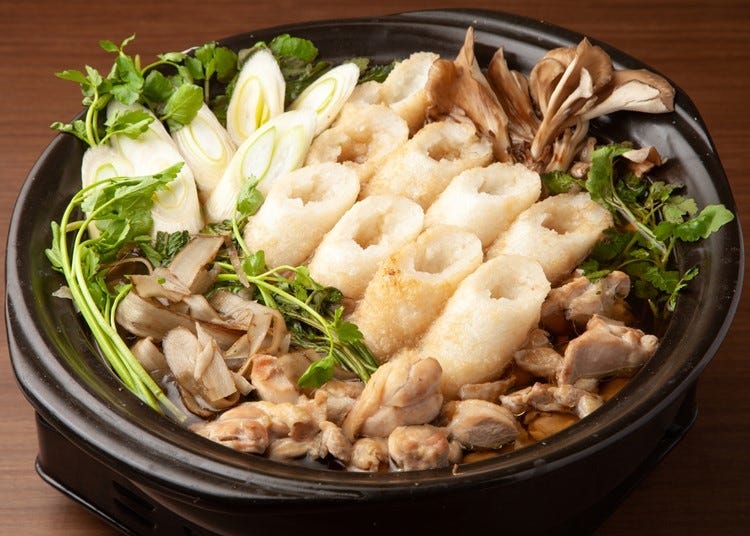
In the Tohoku region of northern Japan, Akita Prefecture is famous for its abundant nature, hot springs, and the adorable Akita Inu dog. Akita also boasts a rich cuisine culture, the star of which is the humble “kiritanpo,” a traditional food made from half-mashed steamed rice wrapped on a stick and roasted over a charcoal fire.
Many travelers visit Akita just to try kiritanpo, and eateries are selling it all throughout the prefecture.
Here, we’ll dive into the history of kiritanpo along with how to make it and some highly recommended restaurants serving it!
Top image: PIXTA
What Is Kiritanpo?
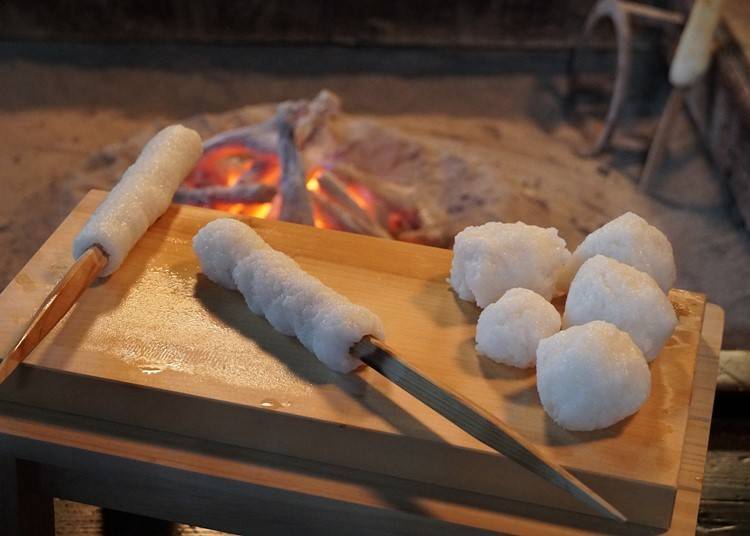
A “tanpo” is made of coarsely mashed rice wrapped around a stick of cedarwood and roasted. A “kiritanpo” is created when a tanpo is cut, although many people simply call both varieties “kiritanpo,” whether cut or not.
The Japanese kanji for tanpo is “短穂,” which means “short rice plant” named from the obvious resemblance.
Being made from rice, they have a springy texture with a mild, sweet taste and mouth-watering aroma when roasted.
They can be added to hotpots or flavored with miso paste and are considered a staple household dish in northern Akita, however, they can be easily found all throughout the prefecture.
The Birth of Kiritanpo
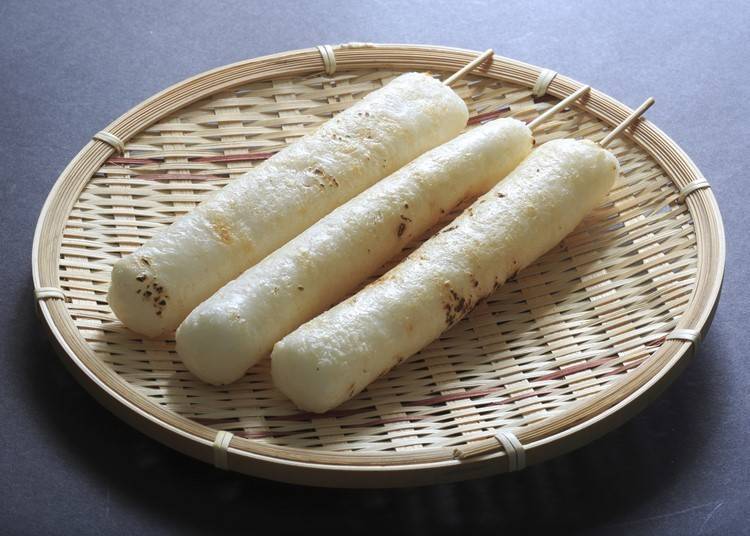
There are several theories explaining the origins of kiritanpo. One claims that farmers holed up in the mountains to make charcoal or hunt would knead leftover rice and add it to chicken hotpots or eat it with miso paste.
Another suggests that it was a common preserved food for the “matagi,” who were traditional winter hunters from the Tohoku region. Depending on the area, the story will likely change.
How to Kiritanpo is Made
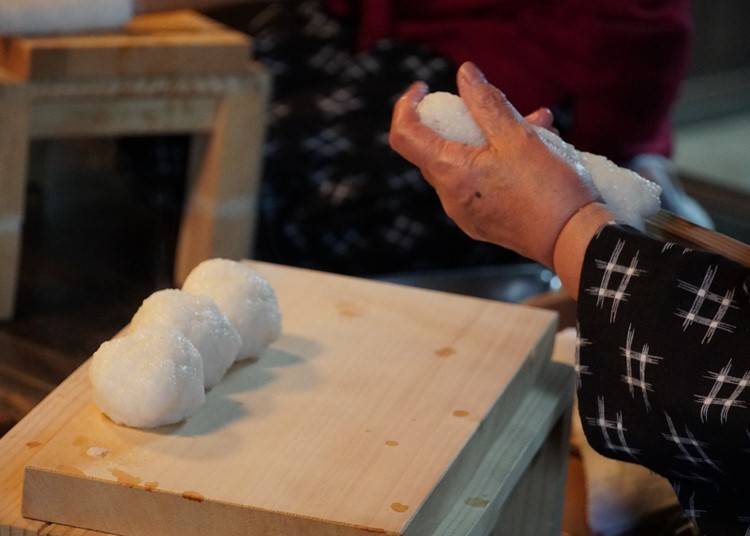
Kiritanpo recipes differ slightly depending on the region and individual store. Here we’ll introduce a recipe shared with us by the Odate Kiritanpo Association, which is based in the city of Odate, considered the home of kiritanpo.
First, prepare a mortar, pestle, wooden cedar skewers, and charcoal, along with rice and saline water.
Kiritanpo Recipe
1. Steam rice until it is a little hard, then move it to a mortar and mash it with a pestle. When mashing, try to ensure that each piece of rice is cut roughly in half. You can continue until you feel a stickiness; however, don’t mash it into a paste, like mochi.
2. Once it is all reasonably sticky, make “onigiri” rice balls around 100 grams in size and wrap them around the cedar wood skewers. Of course, if you can’t find cedarwood (preferably sourced from Akita for complete authenticity), then skewers of any variety will do.
When wrapping, continue turning the skewer so that the rice fits nicely around the tip.
After wrapping, shape your kiritanpo by dipping your hands in saline water and squishing it with your fingers, or roll it on a chopping board until it becomes a uniform size.
3. Roast it on charcoal until it gains a soft color to make a tanbo. In Akita, tanpo were traditionally roasted on “irori,” which are traditional sunken fireplaces on the floor; however, you can easily substitute this for a BBQ grill or hotplate.
4. Remove the roasted tanpo from the skewer and cut it to match your other dishes to make kiritanpo.
How to Eat Kiritanpo
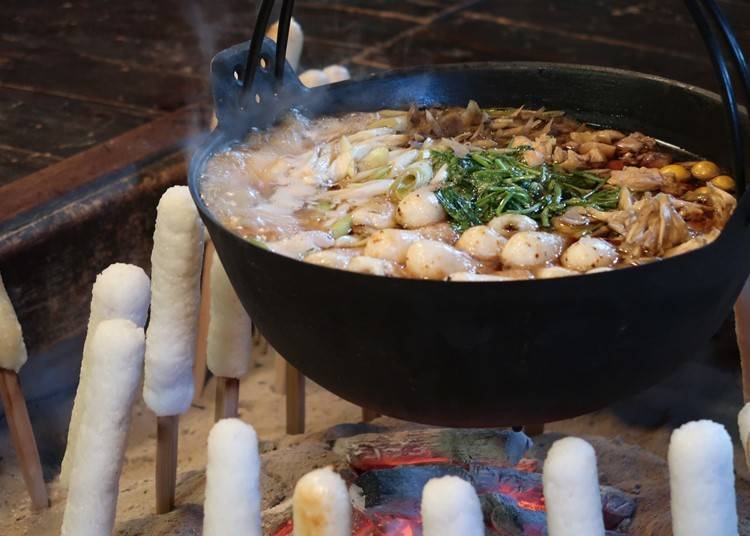
With a rich, savory flavor born from scrumptious Akita rice, kiritanpo complements a huge range of different dishes!
Kiritanpo Nabe Hotpot
Kiritanpo nabe hotpot is the most common way to enjoy kiritanpo. Along with kiritanpo itself, common ingredients include Akita’s renowned chicken brand “hinai-jidori” with mushrooms, burdock root, spring onion, water celery, and more.
These are all simmered in a broth made from the bones of hinai-jidori chicken further flavored with the umami created by the chicken and vegetables.
This irresistible concoction is then absorbed by the kiritanpo, making them plump, juicy, and ultra succulent.
Packed with rice, vegetables, and meat, kiritanpo nabe hotpot bursts with nutrients and warmth, making it a nourishing meal to help survive the brutal Tohoku winters.

Miso-zuke Tanpo
With notoriously long, cold winters, fermented food culture naturally flourished in Akita. One of the most popular fermented foods is miso paste flavored with sugar, mirin, or soy sauce spread over an entire kiritanpo and lightly roasted.
The well-balanced sweet and salty flavor makes for a light yet delicious pick-me-up ideal for a quick snack. Some also have crushed walnuts added to the miso to intensify the aroma and taste.
3 Eateries to Enjoy Delicious Kiritanpo
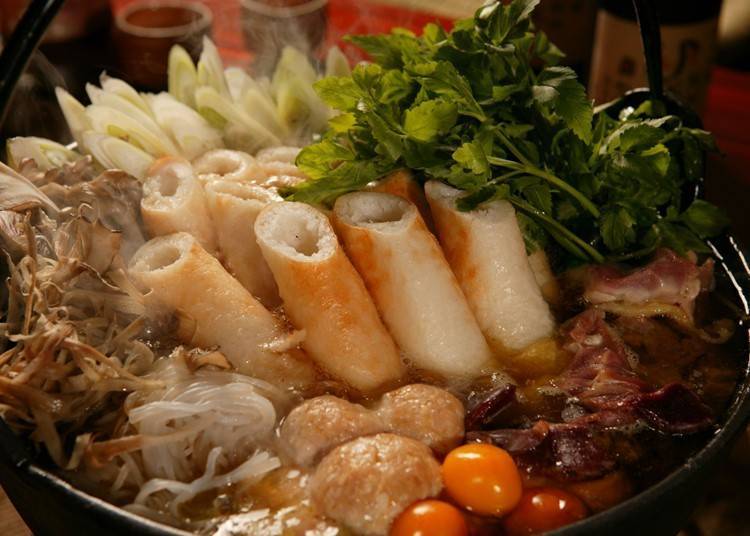
Akita Hinaiya (Odate Main Store)
Akita Hinaiya serves dishes using Odate’s brand-name chicken hinai-jidori, renowned for its potent savory flavors and satisfying mouthfeel.
The most popular item here is the “oyakodon” chicken and egg bowl (980 yen/single serving), which boasts juicy hinai-jidori chicken topped with soft, runny egg flavored with a secret “tare” sauce.
The kiritanpo nabe hotpot (2,000 yen/serving) features perfectly roasted kiritanpo with water celery, mushrooms, burdock, and loads of other ingredients simmered in a soup made from hinai-jidori. Other dishes include Akita classics like kiritanpo with miso and Inaniwa udon.
-
Akita Hinaiya (Odate Main Store)秋田比内や大館本店
- Address 21, Omachi, Odate-shi, Akita Prefecture, 017-0841
- Phone Number 0186-49-7766
・Hours: 11:00am - 2:00pm, 5:00pm - 10:00pm (last order 9:00pm), Sunday: 11:00am - 2:00pm, 5:00pm - 9:00pm (last order 8:00pm)
・Closed: Wednesday
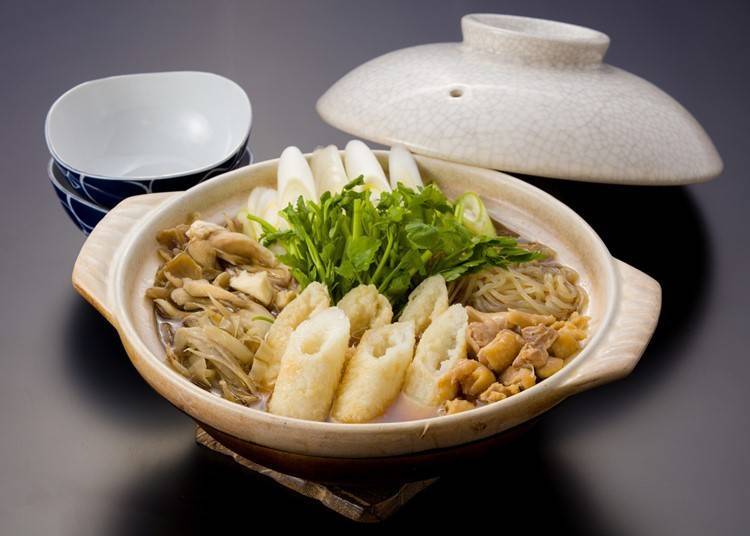
Kappo Misawa
Kappo Misawa is a Japanese restaurant serving traditional dishes made with seasonal ingredients. Within the vast menu is their renowned kiritanpo nabe hotpot (1,980 yen/serving), which flaunts a soup made from 100% hinai-jidori chicken painstakingly boiled on low heat and skimming continuously removed to prevent it from becoming cloudy.
Ingredients include home-cooked kiritanpo made without the use of binding agents from local “Akitakomachi” rice cultivated with reduced agricultural chemicals. Boasting a firm bite that remains strong even when boiled, you’ll be able to relish every morsel until the very end thoroughly!
-
Kappo Misawa割烹 美さわ
- Address 60, Shimmachi, Odate-shi, Akita Prefecture, 017-0844
- Phone Number 0186-42-7543
・Hours: 5:00pm - 10:00pm (last order 9:00pm, drinks until 9:30pm)
・Closed: Sundays, public holidays, other irregular days
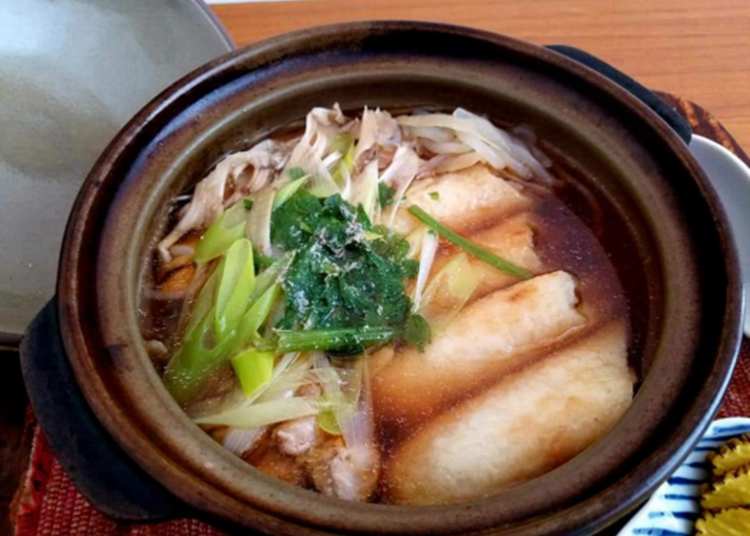
Roadside Station Kazuno Antler “Kiritanpo-kan”
Kiritanpo-kan sits in a roadside station built in the city of Kazuno, known as the origin of kiritanpo.
They serve a limited number of kiritanpo nabe hotpots each day (1,000 yen), which are made in the classic style of half-mashed rice kiritanpo with burdock, maitake mushrooms, and more, in a hinai-jidori chicken soup.
The equally delightful miso-zuke tanpo (200 yen) are covered in hand-made walnut miso and roasted until perfectly fragrant. Definitely give them a try, too - if you still have room!

Along with eating, you can also try your hand at making kiritanpo! Getting to relish fresh kiritanpo you cooked yourself is a fantastic way to familiarize yourself with this wonderful dish thoroughly!
*400 yen/person, from two people. English and Korean-speaking staff are available.
-
Roadside Station Kazuno Antler “Kiritanpo-kan”道の駅かづの あんとらあ 「きりたんぽ館」
- Address 11-4 Shindenmachi, Hanawa, Kazuno-shi, Akita Prefecture, 018-5201
- Phone Number 0186-22-0555
・Hours: 9:00am - 3:00pm (Kiritanpo-kan)
・Closed: As per Roadside Station Kazuno Antler
We hope this article has successfully convinced you to try kiritanpo - Akita Prefecture’s obscure local delicacy! If you’re planning to make your way up north in Japan, definitely keep an eye out for this delightful treat!
Article Coverage/Supervision: Akita Specialty Hometown Odate Kiritanpo Association
Article by: Shoepress
*The information presented in this article is accurate as of February 2022. Please confirm the latest details on official websites.
- Area
- Category
*Prices and options mentioned are subject to change.
*Unless stated otherwise, all prices include tax.
Popular Tours & Activitiess
Recommended places for you
-

Sado Gold Mine
Winter
Niigata And Sado
-

OOYAMA Sendai
Nabe
Sendai And Matsushima
-

Matsushima Bay
Landscapes
Sendai And Matsushima
-

Oirase River
Rivers, Lakes & Canyons
Other Surrounding Areas Of Aomori
-

Hachimantai Aspite Line
Landscapes
Morioka, Hiraizumi And Hachimantai
-

Sendai Tanabata Festival
Japanese Festivals (Matsuri)
Sendai And Matsushima
-

Niigata Sake no Jin 2026: Guide to Japan's Most Legendary Sake Weekend
-
Ad

Why Fukushima is the Next Big Food Destination in Japan The Foodie Paradise Only 90 Minutes from Tokyo
-

What to Buy in Aomori? 11 Aomori Souvenirs Locals Actually Recommend
by: ShiroKu inc.
-

Dining in Yamagata: Must-Try Foods & Top Restaurants Near the Station
by: ShiroKu inc.
-
Ad

Just one stop from Haneda Airport! "Truly Japanese!" Food, Fun, and Knowledge Gather at HICityⓇ Enjoy An Electrifying Night at "Japan Night Fever: Haneda Innovation City"
by: Yohei Kato
-

Aomori's Quiet Side in Autumn: 5 Scenic Spots in Hachinohe According to a Local
by: Marco Blasco
-

18 Travel Secrets of Aomori Japan: Guide for Sightseeing, Shopping, and More
by: Guest Contributor
-

Seafood Bowls and More at the Shiogama Seafood Wholesale Market!
-

Niigata Bucket List: 26 Best Things to Do in Niigata Prefecture For Tourists (Attractions, Local Foods & Activities)
-

Kaminoyama Onsen Guide: Best Things to Do in Japan's Samurai Town!
-

Takahan Ryokan: Enjoy Spectacular Hot Spring Views at Yuzawa's Premier Traditional Inn!
-

Racing Across Japan in the Joetsu Shinkansen: From Tokyo to Niigata's Sake Country In Style














